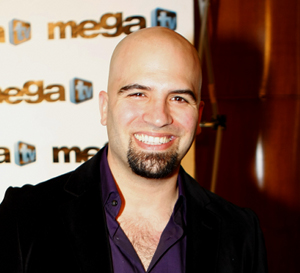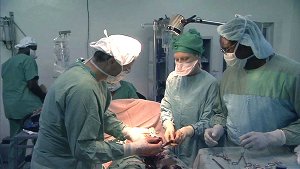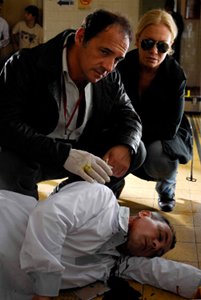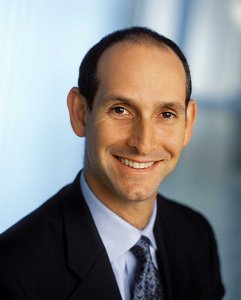Posted by Elena del Valle on December 21, 2009

Jude Law, Guy Ritchie and Robert Downey, Jr. on the set
Photos, video: Warner Bros.
That eccentric British detective is at it again. This time Robert Downey Jr. plays the famous fictional character and Jude Law his faithful sidekick. The latest reincarnation of Arthur Conan Doyle’s Sherlock Holmes is brought to the screen this Christmas Day by Director Guy Ritchie in the simply titled Sherlock Holmes, a Warner Bros. release. Scroll down to watch a film clip.
After a string of brutal, ritualistic murders, Holmes and Watson arrive in time to save the latest victim and uncover the killer, Lord Blackwood. He has terrorized inmates and jailers with his seeming connection to dark and powerful forces. As he approaches his scheduled hanging, Blackwood warns Holmes that death has no power over him. And when, by all indications, Blackwood makes good on his promise, his apparent resurrection panics London and confounds Scotland Yard. Fortunately for fans of the detective to Holmes, the game is afoot.
“He was probably the first superhero, an intellectual superhero,” said Downey Jr. “He was, and probably still is, one of the most recognizable icons on Earth, so much so that a lot of people actually thought that Sherlock Holmes was a real person. The more you look into Arthur Conan Doyle’s books, the more you see what a rich character Sherlock Holmes is. He’s very adept at so many things: he plays violin, he’s a martial artist, a boxer, an expert single stick fighter and a swordsman of sorts. He has a strong moral code in helping good guys catch bad guys, so he has dedicated his life to being a consulting detective. He doesn’t do it to show everyone how smart he is, or that he has figured everything else out when they haven’t; he’s actually a crusader.”

A scene in Sherlock Holmes
“We’ve tried to take him back to what we believe to be his origin, which is essentially a more visceral character,” said Guy Ritchie, who has been a Holmes fan since childhood. “We’ve tried to integrate that and make him more streetwise. He is inquisitive about chemistry, martial arts, and the human condition. Yet he managed to percolate through all the different echelons of English society, which was tremendously complex. But then, as now, Sherlock Holmes is unique; there’s really no one else like him. I think that’s why his appeal has stuck. And while our story is rooted in London of the 1890s, we have tried to make it as contemporary as we possibly can.”
Although a spokesperson indicated by email that “The studio will not be sending screeners for this film,” according to promotional materials, Holmes and Watson fight to bring down “a new nemesis and unravel a deadly plot that could destroy the country.” Other cast members include Rachel McAdams, Mark Strong, Eddie Marsan, and Kelly Reilly in the dark looking story. Michael Robert Johnson, Anthony Peckham and Simon Kinberg are responsible for the screenplay.
Posted by Elena del Valle on December 18, 2009

A scene in Falling Awake
Photos, video: Mega Films, IFC Entertainment
IFC Entertainment and Spanish Broadcasting System (SBS) are partnering to promote Falling Awake, a new film due to be released January 2010. The marketing partnership will be between IFC Film, part of IFC Entertaiment, and Mega Films, the film division of SBS. Scroll down to watch a 60-second video clip of Falling Awake.
IFC Films is scheduled to release the new movie in late January in New York and Miami with a simultaneous release nationwide on demand while SBS is scheduled to promote the film with a multi-million dollar advertising and promotion campaign on the company’s television, radio and online outlets.

Jonathan Sehring, president, IFC Entertainment
“SBS and IFC together are a potent team and are ideal partners for the release of Falling Awake,” said Jonathan Sehring, president of IFC Entertainment, in a press release. “Our combined areas of expertise should ensure this terrific film finds the widest possible audience.”
Falling Awake, Mega Films’ first English-language production, stars Jenna Dewan (Step Up), Nicholas Gonzalez (Melrose Place) and Andrew Cisneros. The film was directed by Agustin (Gabriel, El Vacilon) and produced by Andrew Adelson. The executive producers were Steven Molasky, Dean Valentine, Brad Friedmutter and Raul Alarcon, (president, chief executive officer and chairman of SBS).
According to promotional materials, the movie sets out to illustrate the story of Jay (Andrew Cisneros), a young Latino musician in the Bronx who struggles to find his identity in a home crowded with family members and a neighborhood of loyal friends and dangerous enemies. His determination to find himself grows after he meets a beautiful Brooklynite, Alessandra (Jenna Dewan).
At the same time he is dealing with life issues like the loyalty he feels to his friends, his brother (Nicholas Gonzalez), who recently returned home from the war, and the expectations of his frustrated, angry father (Nestor Serrano). As Jay fights to break free of the cycles of anger and violence that grip his life, he finds that only love can give him a chance at happiness, and comes to a new understanding that helps him take the long, uncertain leap into his future.

Agustin, director, Falling Awake
“It is fantastic to have the opportunity to work with a company like IFC Films that understands the strength and reach of SBS and Mega Films within the 40 million strong U.S. Hispanic market. I think the coming together of our audiences is precisely what Falling Awake is about,” said Agustin.
Spanish Broadcasting System (SBS), is one of the largest publicly traded Hispanic-controlled media and entertainment companies in the United States. The company owns or operates 21 radio stations, Mega TV, and LaMusica.com.
IFC Entertainment consists of multiple brands devoted to bringing specialty films to IFC Films, IFC Festival Direct, IFC Productions, and the IFC Center. IFC Films is a distributor of independent films. Its day and date distribution model, IFC In Theaters, releases independent films simultaneously in theaters, on cable’s On Demand platform and through Pay-Per-View. IFC Entertainment’s companies are subsidiaries of Rainbow Media Holdings LLC which in turn is a subsidiary of Cablevision Systems Corporation.
Posted by Elena del Valle on December 7, 2009

Dr. Lepora with Dr. Krueger in surgery in Liberia
Photo and videos: Red Floor Pictures Production
In mid 2005, Mark Hopkins began production of a film about Medecins Sans Frontiers (MSF), the well known international emergency assistance organization spearheaded by volunteer physicians and health care providers, and its work, mostly in Africa. It required much convincing and gaining of trust on his part to win Doctors Without Borders, as it is known in English, over to the idea of a no holds barred film of their volunteers in the field. Hopkins describes the film as exploring the limits of idealism. Scroll down to watch two video clips of the documentary.
“I hope they get a sense of what life in the field is like for MSF doctors. Beyond that, hopefully an unburdened sense of interest in the humanitarian arena: an understanding that these guys are not heroes, they’re not saving the world, and that the work is engaging and rewarding in its own right – it doesn’t need ideas of big accomplishment to justify itself – the patient in front of you is more than enough. We didn’t make the film to deliver a message, the idea was more to immerse people in the MSF environment,” said Hopkins about the purpose of the project and what he hopes the audience gains from viewing the film.
Nearly four years after filming of Living in Emergency began the film is ready to open in theaters nationwide as a Red Floor Pictures release. Ten people worked on the project made possible with a modest $1.7 million budget provided by private individuals who the promoters declined to identify.
“The reason for the time delay is that documentaries take a long time to make. The crew began filming in mid-2005 and filmed on and off for 12 months. The editing ran for 18 months. The film was finished in 2008, premiered at the Venice Film Festival, spent the last 12 months playing at festivals, and is now building up to its widespread release,” a film spokesperson explained when asked about the delay between the film and release dates.
From July to September 2005, the crew filmed in Beni and Kayna, two towns in the Democratic Republic of Congo (DRC), especially the MSF hospital and its environs. Next, they traveled to the Liberian capital of Monrovia to film at MSF’s Mamba Point Hospital, where MSF was providing emergency care following the Liberian Civil War; and to the remote northern towns of Foya and Kolohun.
In October 2005, the crew traveled to Kashmir, Pakistan to film the MSF emergency response to the 7.6 magnitude earthquake. In 2006, they returned to Africa, to revisit Mamba Point Hospital, and traveled to Malawi to see the MSF AIDS program. Additional film locations included Paris, France, Montreal, Canada, Niger, Kenya, and Tennessee, United States. The production was organized to cover the various facets of the MSF organization such as the administrative base, conflict and post-conflict missions, and response to natural disasters.
Hopkins, born in Puerto Rico and raised in Italy and Kenya, worked for producer Scott Rudin for several years before producing his first solo documentary film. He was most recently the producer of Going Upriver: The Long War of John Kerry. Living in Emergency is his directorial debut. Bruno Coulais, composer, and Bob Eisenhardt, senior editor, also contributed to the film.
Doctors Without Borders/Médecins Sans Frontières (MSF) is an international medical humanitarian organization created by doctors and journalists in France in 1971 that strives to provide independent, impartial assistance to those most in need. The organization, a recipient of the 1999 Nobel Peace Prize, provides aid in more than 60 countries to people whose survival is threatened by violence, neglect, or catastrophe, primarily due to armed conflict, epidemics, malnutrition, exclusion from health care, or natural disasters.
According to promotional materials, on any one day, more than 27,000 individuals representing dozens of nationalities are providing assistance to people caught in crises around the world. They are doctors, nurses, logistics experts, administrators, epidemiologists, laboratory technicians, mental health professionals, and others who work together in accordance with MSF’s guiding principles of humanitarian action and medical ethics. The majority of these aid workers are from the communities where the crises are occurring; only ten percent of teams are made up of international staff.
Comments:
Filed Under: Video
Posted by Elena del Valle on November 13, 2009

Los Simuladores
Photos, video: Cinelatino
Sony Pictures Television (SPT) will premiere Los Simuladores, a Mexican series, in the United States on November 15 exclusively on Cinelatino, a Spanish-language movie channel. Based on an Argentine series of the same name, Los Simuladores centers on the adventures of four men operatives, trained and prepared to carry out sting operations. Scroll down to watch a preview of Los Simuladores in Spanish.
Shot in high definition, the show features a cast of Mexican actors, including Tony Dalton (Matando Cabos, 13 Miedos, Sultanes del Sur), Arath de la Torre (La Parodia, La Hora de La Papa), Ruben Zamora (7 Dias, Pasion) and Alejandro Calva (The Producers, The Pillow Man, Sin Memoria). They dedicate their efforts and skills to solving human-interest conflicts for their clients, including troubled marriages, dangerous loan sharks, swindling agents and broken hearts.
The team features Mario Santos (Tony Dalton), the brain, who comes up with the plans; Emilio Vargas (Arath de la Torre), the chameleon, who plays different characters in the operations; Pablo Lopez (Alejandro Calva), the go-to man, in charge of logistics and technical aspects; and Gabriel Medina (Ruben Zamora), the researcher, who finds the necessary information for Santos to come up with the plans.
“This is the highest-caliber premium series currently available to U.S. audiences in Spanish, and we’re excited to offer it exclusively to our viewers,” said Jim McNamara, chairman of Cinelatino. “The superb production values, excellent cast, and compelling story lines make this THE must-see series of the season.”
The series also features Natalie Esperon (Por un Beso, La Esposa Virgen and El Nombre del Amor), Rafael Amaya (Las Dos Caras de Ana and Amor Letra Por Letra), Silverio Palacios (Morirse en Domingo, Amor a Morir, Matando Cabos) and Adal Ramones (Otro Rollo con Adal Ramones).

Los Simuladores
In late 2008, Los Simuladores debuted in Mexico on Televisa and throughout Latin America on Sony Entertainment Television. After a successful first season, a second season of the series began production earlier this year.
Los Simuladores is the second premium series to air on Cinelatino. The channel premiered the series Tiempo Final in the spring of 2009. The first two episodes of Los Simuladores are scheduled to premiere on Cinelatino on Sunday, November 15, at 7 p.m. EST and repeat at 11 p.m. EST (4 p.m. and 8 p.m. PT). A new episode of the 13 episode series will air every Sunday at 7 p.m. EST and will repeat at 11 p.m. EST (4 p.m. and 8 p.m. PT) during the season. Cinelatino plans to air Season Two in early 2010.
According to promotional materials, Cinelatino has more than 3.6 million subscribers on major cable, satellite and telephony providers throughout North America. Cinelatino offers Spanish-language programs and titles from Mexico, Latin America, Spain and the U.S. Cinelatino is jointly-owned by Grupo MVS, InterMedia Partners and Panamax Films.
Sony Pictures Television produces and distributes varied programming including series, telefilms, theatrical releases and family entertainment around the world and for every platform: broadcast and cable television, first-run and off-network syndication and digital distribution.
Posted by Elena del Valle on October 19, 2009

Julio Chavez, Cecilia Roth and a victim in Epitafios
Photo, video: courtesy HBO
When the second season of Epitafios, an HBO Latino and HBO2 suspense series in Spanish, began last month detectives Renzo Marquez (Julio Chávez) and Marina Segal (Cecilia Roth) were tracking another killer. This one replicates previous slayings as if they were works of art and photographs the crimes for posterity. Scroll down to watch a short video of Epitafios.
The 13-episode second season, written by twin brothers Walter Slavich and Marcelo Slavich, is scheduled to air Fridays at 10 p.m. ET/PT on HBO Latino and Tuesdays, at the same time, on HBO2 with English subtitles. The series will also be available on HBO On Demand in Spanish with English subtitles.
Cast members for the series, filmed Buenos Aires, Argentina, include: Julio Chávez as Renzo Márquez; Cecilia Roth as Marina Segal; Leonardo Sbaraglia as the murderer; Daniel Fanego as Mazzoni; Alejandro Awada as XL; Natalia Lobo as Gabriela Friedman; Villanueva Cosse as Marcos Márquez; Nahuel Perez Biscayart as Pablo; and Carlos Belloso as Díaz.
In 2005, a 13-episode season of Epitafios first aired on HBO Latino in the United States. In 2006, the series had its HBO Signature debut with English subtitles. The series is described as HBO Latin America’s first fictional dramatic series written and filmed in Latin America, by Latin Americans, and for the Latin American audience. A suspense story inside a love story, the Spanish-language series made its TV premiere on HBO Latin America in 2004.
Also filmed in Buenos Aires, the first season followed the cat-and-mouse game between a morose police detective (Julio Chávez) who was looking for a reason to live and a psychotic serial killer (Antonio Birabent) who was bent on revenge.
HBO Latino is a dedicated Spanish-language premium channel targeting Spanish speaking Latinos in the United States. The channel features U.S. premieres of Spanish-language series, music videos, original short-form programming, films, and documentaries from North America, Latin America and Spain. HBO Latino also shows Hollywood movies, HBO boxing and HBO original programming from the network’s main channel in Spanish.
Posted by Elena del Valle on September 21, 2009

Luis Silberwasser, SVP and GM, Discovery Networks U.S. Hispanic Group
Photo, video: Discovery en Español
Discovery en Español will celebrate Hispanic Heritage Month 2009 with four original productions scheduled to begin airing September 20 and continue every Sunday night at 9 pm E/P during Hispanic Heritage Month (traditionally celebrated September 15 to October 15 see Getting Ready for Hispanic Heritage Month). The theme for this year is the optimism, determination, perseverance and courage of Hispanics to survive and conquer adversity. Scroll down to watch a Discovery en español video in Spanish about the 2009 Hispanic Heritage Month campaign.
The programs will explore the pilgrimage that transformed the lives of field workers and gave rise to César Chávez, a well known Latino leader, in La Marcha de las Uvas. Un Continente Tiembla, Vivir Para Contarlo, and Atrapados, focus on the fighting spirit of Latinos and their a shared drive and aspirations.
“During Hispanic Heritage Month, we look to offer our audience programming that is objective, enriching, and relevant. This Hispanic Heritage Month Discovery en Español will celebrate Hispanics, not only through original programming, but also via a national sweepstakes that will offer one lucky winner the chance to get a head start and to make his or her dreams come true,” said Luis Silberwasser, senior vice president and general manager of Discovery Networks U.S. Hispanic Group.
La Marcha de las Uvas, scheduled to air Sunday, September 20 at 9 p.m. is a one-hour special about Hispanic farm workers’ fight for equality in March of 1966 in Delano’s Fields, California. At that time, 70 grape pickers left the field to protest accompanied by the banner of the Virgin of Guadalupe and led by a humble farmer. The march culminated 25 days later, in Sacramento, with 10,000 people. The program name means The March of the Grapes in Spanish. The production required nine months and was filmed mostly in Delano and Sacramento, California by Eye Works/Cuatro Cabezas under the supervision of Michela Giorelli, director of production and development, Discovery en español.
Un Continente Tiembla, scheduled to air the following Sunday at the same time is a documentary about some of the worst natural disasters of Latin America. The goal of the program is to capture the spirit of survival of that region’s inhabitants. Using archival footage and dramatizations the producers showcase people’s resourcefulness when dealing with earthquakes and volcanic eruptions in Venezuela, Colombia, Peru, Guatemala, El Salvador, Mexico and Chile.
Atrapados airs the first Sunday in October and shares the story of 65 miners who died after an explosion at a coal mine in Mexico. The producers address the dangers of mining, what they believe may be one of the world’s most dangerous industries. The human story of the Mexican disaster is the central theme of the program which examines what happened at the Pasta de Conchos mine in Coahuila; how the trapped miners were cut off behind caved-in roofs with insufficient oxygen, and how and why the rescue workers, even after days of courageous efforts, were unable to reach them in time.
A series of six episodes,Vivir para Contarlo, is scheduled to begin airing Sunday, October 11) at 9 p.m. It is about some of the most terrible tragedies in Latin America, from the view point of the survivors, the rescue teams and the journalists who covered them. Each of the episodes will cover one particular tragedy, mixing archival footage, interviews, where-are-they-now sequences and dramatization. The series begins with Avalancha, Spanish for Avalanche, and runs every Thursday starting on October 29.
Starting on September 15, the Spanish language network will invite viewers to participate in its national Dreams come True initiative, which incorporates a sweepstakes and a virtual online share at discoveryenespanol.com. On the website visitors are in invited to exchange stories of aspiration and triumph via video and photo uploads.
Executives hope to receive submissions online that illustrate the dreams and achievements of Hispanics in the United States. They also anticipate 8 million impressions. Visitors can register for a chance to win a $5,000 cash prize towards a dream of their choice by calling 1.877.345.GANA or visiting the network’s website before midnight on October 15, 2009.
Discovery en Español, the Spanish-language voice of Discovery, offers Spanish speaking viewers in the United States science and technology, world culture and history, nature and wildlife and real-life drama from a selection of the Discovery networks and in house original Spanish-language content.
Posted by Elena del Valle on August 31, 2009

Lee Maicon, VP, Wing
Photo, video: Wing
Everybody needs clean laundry, right? Even unattached Spanish speaking Latino men have to wash their clothes sometime. With that market in mind, the makers of Downy Ultra laundry detergent and Wing, the company’s Spanish language ad agency for Downy, recently produced Lavadero (Laundry), a new 30 second Spanish language ad. Scroll down to watch the Spanish language ad.
Forty people representing Wing dedicated an undisclosed budget and one day to film the commercial in Buenos Aires, Argentina. The goal for the project was to find a new and interesting way to communicate Downy’s equity and long lasting scent.
“In a world where people have many options and are highly distracted in their media habits, even successful premium brands like Downy need to be innovative. The Lavadero spot is a great example of how a premium brand in a high consumer involvement category sought out a different way to communicate what makes the product special,” said Lee Maicon, vice president and head of Strategy at Wing. “By casting men and incorporating humor, we were able to take a category that is very often taken too seriously and made it much more relatable to the average consumer.”
In addition to Maicon, the following individuals and companies worked on the ad production: Gustavo Asman, John Castrillón, Nadina Steimberg, Ana Franco, Verónica Paz, Mari Provi Florez, America Filmworks, Sebastián Orgambide, Alejandro Giuliani, Marcia Jaes, Mariano Antonietti, Red Car, Juan Pablo Cadaveira, Francess Tom-Sahr, Mixology Lab, and Luis F. Herrera.
The spots began airing last month on Telemundo, LATV and KMPX (Dallas). Wing is a Hispanic marketing communications agency.
Comments:
Filed Under: Video
Posted by Elena del Valle on August 24, 2009

Humane Society of Greater Miami Alley PSA campaign
Photos, video: Accentmarketing
There are 1.3 million cats and dogs in Miami-Dade County. While animal abuse and abandonment have been a problem for many years, with the recession and foreclosure glut the number of abandoned animals in that city has tripled, according to the Humane Society of Greater Miami. Organization representatives indicate that pet owners often don’t realize the implications of allowing their pets to breed, and the accompanying responsibility of finding homes for the whole litter.
In the hope of bringing attention to these issues, the Humane Society of Greater Miami with the support of Accentmarketing, unveiled a new $100,000 (estimated costs of production) Spanish language public service advertisement (PSA) campaign with Alley, a TV spot, and Studio Shot, a print ad. A radio ad is planned for release next month. They plan to distribute the ads to local Spanish language media. Scroll down to watch the video ad.
The TV ad features a lone baby dressed in a kitten costume crawling on the ground in a dark alley while a voice over discusses pet abandonment and sterilization issues on behalf of the Humane Society of Greater Miami Adopt-A-Pet program. As the camera pans out, viewers are meant to see that the baby represents an abandoned kitten, sitting by himself in a dirty and empty alley, lost and bewildered.
The spot creators want viewers to understand that just like babies, pets are part of their family. They want pet owners to realize that it’s their responsibility to spay and neuter their pets to help reduce the animal overpopulation problem in Miami-Dade County. To do that the Accentmarketing team focused on creating a strong correlation between how sterilizing a pet can result in saving thousands of animals from ending up homeless on the street or in a shelter.

Ana Maria Montero, account group director, Accentmarketing
“In this day and age where we see such unjust animal cruelty in our community, the Accentmarketing team felt passionate about instilling responsibility among current and future pet owners to spay and neuter their pets,” said Ana Maria Montero, account group director, Accentmarketing in a press release. “We are proud to be able to support the Humane Society of Greater Miami’s mission and contribute towards inspiring pet owners in our community to be more responsible for their pets.”
Studio Shot is a print interpretation of the Alley TV spot. The image of the baby wearing the kitten costume looks like a professional baby studio portrait. The headline reads: “Tu mascota es como un hijo. Sus crías también deberían serlo” (Spanish for Your pet is like your child. Their offspring should be as well.). The goal is to make pet owners see the baby like a pet, one of thousands of abandoned pets in the streets as a result of unsterilized pets. Most of those abandoned pets are likely to die, according to the organization.
The TV spot and print ad were shot in Los Angeles, where the Production House, D’Avant-Garde is located. Although the TV spot was shot in one day, pre-production and post-production of the TV and print ads required two months.
Twenty people donated their services pro bono to the Humane Society Spanish language PSA campaign. The Accentmarketing team members that led the campaign were: Luis Puerta, creative director and copywriter; Junior Jimenez, senior art director; Rudy Leschhorn, executive producer; and Ana Maria Montero. The following also supported the project: Pascui Rivas and Francisco Pugliese, media directors at D’Avant-Garde, Tom Marvel as director of photography, Guillermo Sauceda for the voice over, and digital retouching by Artistic Image.
The Humane Society of Greater Miami Adopt-A-Pet is a limited admit, adoption guarantee facility, dedicated to placing every dog and cat in their care into a loving home, and promoting responsible pet ownership and spay/neuter programs. Animals admitted into their shelter are safe from euthanasia for as long as it takes to find someone to adopt them. The organization houses 250 pets on a daily basis and spays or neuters 12,000 animals a year in its two clinics.
Established in 1994, Accentmarketing is a Hispanic marketing communications agency with offices in Miami, Los Angeles and Detroit. Clients include the American Heart Association, Farmers Insurance, GobiernoUSA.gov, Chevrolet, the California Association of Realtors, Kaiser Permanente, Brown-Forman and the U.S. Navy.
Posted by Elena del Valle on August 19, 2009

There was an increase in ethnic procedures
Photo, video: American Society of Plastic Surgeons
According to a recently released report from the American Society of Plastic Surgeons (ASPS), between 2007 and 2008 there was an increase in plastic surgery procedures among all groups except “Caucasians” (we assume that refers to non Hispanic whites since they list Hispanics separately and Hispanics can be of any race). While there was a 2 percent decrease among non Hispanic whites, there were 3 million ethnic procedures representing an 18 percent increase among Hispanics, a 10 percent increase among African Americans and a 5 percent increase among Asians. It is likely this increase parallels national demographic changes and the overall growth in ethnic markets. Scroll down to watch an ASPS video on the subject.
“We’re seeing a rise in Hispanics opting for cosmetic procedures that coincides with the growth we’re seeing in the nation’s population,” said John Canady, MD, president, ASPS in a press release. “Less social stigma, as well as, advances in procedures allow patients to maintain their ethnic look. While the majority of patients continue to be Caucasian, the profile of the typical patient is changing.”
The report indicates 91 percent of all procedures were performed on women. Overall, cosmetic procedures, especially minimally invasive and less expensive options, increased 3 percent. There were 11 million cosmetic procedures performed during that time period. Surgeries increased among women 30 years old and older although there was a greater increase among women 40 and older. Fewer young women opted for surgery than in the previous year.
There was a noticeable increase in minimally invasive procedures like laser skin resurfacing, Botox and laser treatment of leg veins, and a decrease in invasive procedures like liposuction, Tummy Tucks, breast augmentation and face lifts. At the same time, there was an increase in reconstructive procedures such as breast, birth defect and hand reconstructions.
Some analysts believe these changes are due to the economic recession. As fewer patients opt for cosmetic procedures more doctors offer reconstructive procedures to make up the difference in income. In the past they may have been less willing to accept or pursue reconstructive procedures because of the extra insurance paperwork and added inconvenience.
There were increases in procedures performed in an office (rather than a clinic or hospital). Also more patients chose to have several procedures performed in one visit and return to the same doctor. The Pacific Mountain area had the greatest number of procedures, 3.5 million.
To produce the report and ensure objectivity in the gathering, analysis and publication of its procedural statistics, ASPS partnered with Data Harbor Solutions, a health care industry data management and technology development company. As part of the process researchers aggregated and extrapolated the results to the entire population of more than 24,000 physicians most likely to perform cosmetic and reconstructive plastic surgery procedures.
Comments:
Filed Under: Video
Posted by Elena del Valle on August 10, 2009

Actress Ana de la Reguera
Photo, videos: Procter & Gamble
Procter & Gamble recently hired Ana de la Reguera, a Mexican actress, to promote its Pantene Pro-V line with a new Spanish language ad campaign that appeared in Hispanic magazines, TV stations and websites across the United States in June 2009. Company representatives declined to share details about the campaign in spite of several email and phone requests. Scroll down to watch the ad and a behind the scenes interview with de la Reguera.
“We feel honored that Pantene has received more awards than leading salon brands,” said Carolina Varela, brand manager for Pantene. “Her stunning beauty, gorgeous hair and easy spirit make her an ideal addition to the Pantene family of spokesmodels.”
“My work demands constant hair brushing, combing and styling. For a fraction of the cost of expensive salon brands, Pantene keeps it healthy,” De la Reguera was quoted in a press release.
De la Reguera, voted one of the 50 Most Beautiful by People en Espanol magazine, made her Hollywood debut in a 2006 movie. P&G Beauty products include 100 brands available in nearly 130 countries. The cosmetics giant had sales of more than $22 billion in fiscal year 2006/07, making it a leading global beauty company. P&G Beauty brands include Pantene, Olay, Head and Shoulders, Max Factor, Cover Girl, DDF, Sassoon Professional, Wellaflex, Rejoice, Sebastian Professional, Herbal Essences, Koleston, Clairol Professional.
Click on the play button to watch the Pantene Spanish language ad and behind the scenes video below
Comments:
Filed Under: Video























